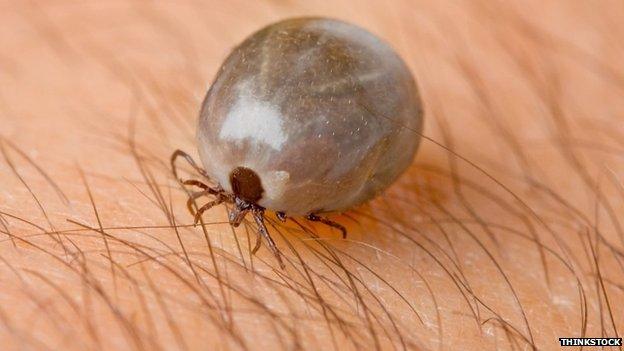Bristol university project aims to map tick 'hotspots'
- Published

Tick numbers and the incidence of related ailments such as Lyme disease have increased over the past 10 years
Vets from around the United Kingdom are being asked to send ticks removed from dogs to researchers, in an attempt to identify Lyme disease hotspots.
University of Bristol scientists will use the information to better understand infection levels in ticks and how this can be spread to humans.
The campaign is targeted at dog owners to help raise awareness of the dangers of diseases associated with ticks.
Infected ticks can also spread the bacterial infection, external to humans.
It is estimated there are up to 3,000 new cases of Lyme disease in England and Wales each year.
Lyme disease can often be managed effectively if it is detected early on but can cause chronic pain and severe fatigue if left untreated.

The Big Tick Project was launched by wildlife broadcaster Chris Packham
Organisers of the Big Tick Project say tick numbers and the incidence of related ailments have increased over the last 10 years.
Project leader, Prof Richard Wall, said the data from "all types of practices ranging from urban to rural locations, will help advance the understanding of the level of diseases and pathogens ticks carry in the UK".
He added nationally, tick distribution had expanded by 17% in the last 10 years and tick numbers had also increased in 73% of locations surveyed.
Public Health England estimates the number of new cases each year at about 3,000, while Lyme disease charities say the figure could even be as high as 15,000.
- Published9 July 2013

- Published1 April 2013
